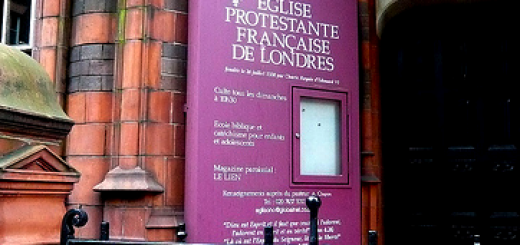What Jesus did #11: he refuses to condemn (and yet does not condone)
On the face of it, today’s account of what Jesus did is pretty low key compared to the awesome miracles we’ve looked at so far. There’s no controlling wind and waves, no turning water into wine, no producing enough food for a whole crowd. This is a very human encounter on one level, but don’t be fooled. What Jesus achieves here is truly remarkable on so many levels.
Then they all went home, but Jesus went to the Mount of Olives.
At dawn he appeared again in the temple courts, where all the people gathered around him, and he sat down to teach them. The teachers of the law and the Pharisees brought in a woman caught in adultery. They made her stand before the group and said to Jesus, “Teacher, this woman was caught in the act of adultery. In the Law Moses commanded us to stone such women. Now what do you say?” They were using this question as a trap, in order to have a basis for accusing him.
But Jesus bent down and started to write on the ground with his finger. When they kept on questioning him, he straightened up and said to them, “Let any one of you who is without sin be the first to throw a stone at her.” Again he stooped down and wrote on the ground.
At this, those who heard began to go away one at a time, the older ones first, until only Jesus was left, with the woman still standing there. Jesus straightened up and asked her, “Woman, where are they? Has no one condemned you?”
“No one, sir,” she said.
“Then neither do I condemn you,” Jesus declared. “Go now and leave your life of sin.” John 7:53-8:11
 This woman is treated as an object by those who have identified her as a sinful woman. She’s dehumanised, dragged into a public place to have her shame exposed before a large crowd. The spiritual leaders are angry and ready to condemn her to death. They feel totally justified in acting this way, because way back in the Old Testament, this is what God instructed His people to do. This is a righteous anger in their eyes, punishing a woman for her promiscuity and betrayal, ridding the world of a temptress who will lead men off the right path. (Although it does seem that punishing a woman in this way was not an everyday occurrence. There was plenty of turning a blind eye going on in society at that time.)
This woman is treated as an object by those who have identified her as a sinful woman. She’s dehumanised, dragged into a public place to have her shame exposed before a large crowd. The spiritual leaders are angry and ready to condemn her to death. They feel totally justified in acting this way, because way back in the Old Testament, this is what God instructed His people to do. This is a righteous anger in their eyes, punishing a woman for her promiscuity and betrayal, ridding the world of a temptress who will lead men off the right path. (Although it does seem that punishing a woman in this way was not an everyday occurrence. There was plenty of turning a blind eye going on in society at that time.)
On this occasion, they don’t turn a blind eye and they don’t just get on with it, however. This woman on this occasion is useful to them. They seize the opportunity to use the woman to show Jesus up. They’re following exactly what it is written in the Law, God’s rule book – and yet they have a feeling that Jesus will have a problem with that. Is he actually going to have the nerve to say outright that the Law is invalid? That would be just cause to imprison him and condemn him to death right there.
I have no idea why Jesus bent down and started to write on the ground with his finger. Perhaps to given himself time to think. Perhaps to give the spiritual leaders time to reflect on what they’re doing. A natural pause in which the mix of emotions that are running high have time to cool a little. Jesus stays calm. He invites the one without sin to cast the first stone. He’s caught them out. He’s playing them at their own game. None of them are willing to have the spotlight turned on them. They’re not prepared to have the tables turned and to have their actions judged.
 And so one by one, they walk away. It’s only then that Jesus turns to speak to the woman herself. He doesn’t ask if she’s guilty. He doesn’t ask if she’s sorry. He refuses to condemn, refuses to punish. But he does tell her to ‘sin no more’. He’s not condoning her lifestyle. This is an opportunity for her to think about the path she’s on and turn away from this life of deceit and unfaithfulness that she’s walking right now. His lack of condemnation does not depend on her response. We don’t know her response. Jesus forgives and rescues and sets her free without knowing the outcome in her life.
And so one by one, they walk away. It’s only then that Jesus turns to speak to the woman herself. He doesn’t ask if she’s guilty. He doesn’t ask if she’s sorry. He refuses to condemn, refuses to punish. But he does tell her to ‘sin no more’. He’s not condoning her lifestyle. This is an opportunity for her to think about the path she’s on and turn away from this life of deceit and unfaithfulness that she’s walking right now. His lack of condemnation does not depend on her response. We don’t know her response. Jesus forgives and rescues and sets her free without knowing the outcome in her life.
It is not our place to judge. That’s what I take from this. It’s backed up by so much of what Jesus says and does. Jesus refuses to condemn. And so should we. Jesus does not punish. And neither should we. In fact, Jesus challenges those who set themselves up as judge over others. He challenges them to look at their own lives first, to concentrate on their own choices, to walk their own path.
Let the one without sin cast the first stone.
In any of these heated arguments about the rights and wrongs of other people’s life choices, we would do well to remember this.
Who are we to judge?
Jesus urges the woman to reflect on her life choices in such an understated way. Just as he does with you and with me and with those we respect and those we do not. All of us every single day. This is Jesus’ work, not ours. No one placed us as judge over another. It is not our job as individuals to condemn or to punish. And especially not to pass this off as doing it in God’s name and with God’s authority. The damage that has been done in the lives of countless individuals within the church in God’s name and with God’s authority is truly shocking and heart-breaking.
A final word: the earliest manuscripts and many other ancient witnesses do not have John 7:53—8:11. This account was added later. I wonder why. I wonder what was going on in the early church at the time that necessitated the adding of this story that must have been circulating at the time and hadn’t seemed significant enough to add to the original collection of events from Jesus’ life.
We definitely need to be reminded of the account of this event now. There’s a lot of judgement and condemnation out there right now. I want no part of that. I look at this story of how Jesus handed the righteous anger of the spiritual leaders of the time and I take heart. I do not have to be a part of that. I can choose not to condemn. I can choose a path of love and grace and mercy.
It is not my place to judge.
I’m more than OK with that.













Oh, I do so agree!